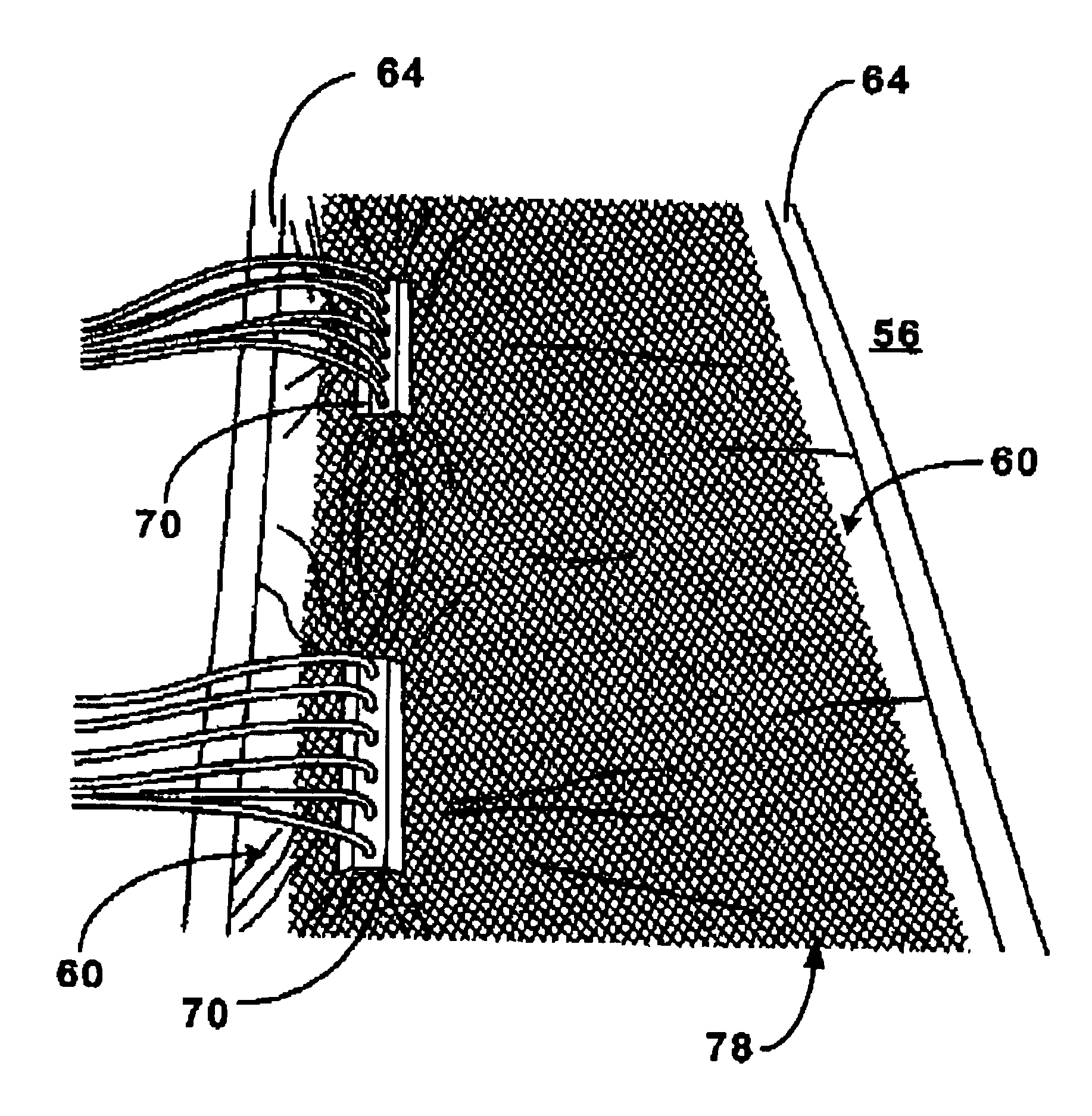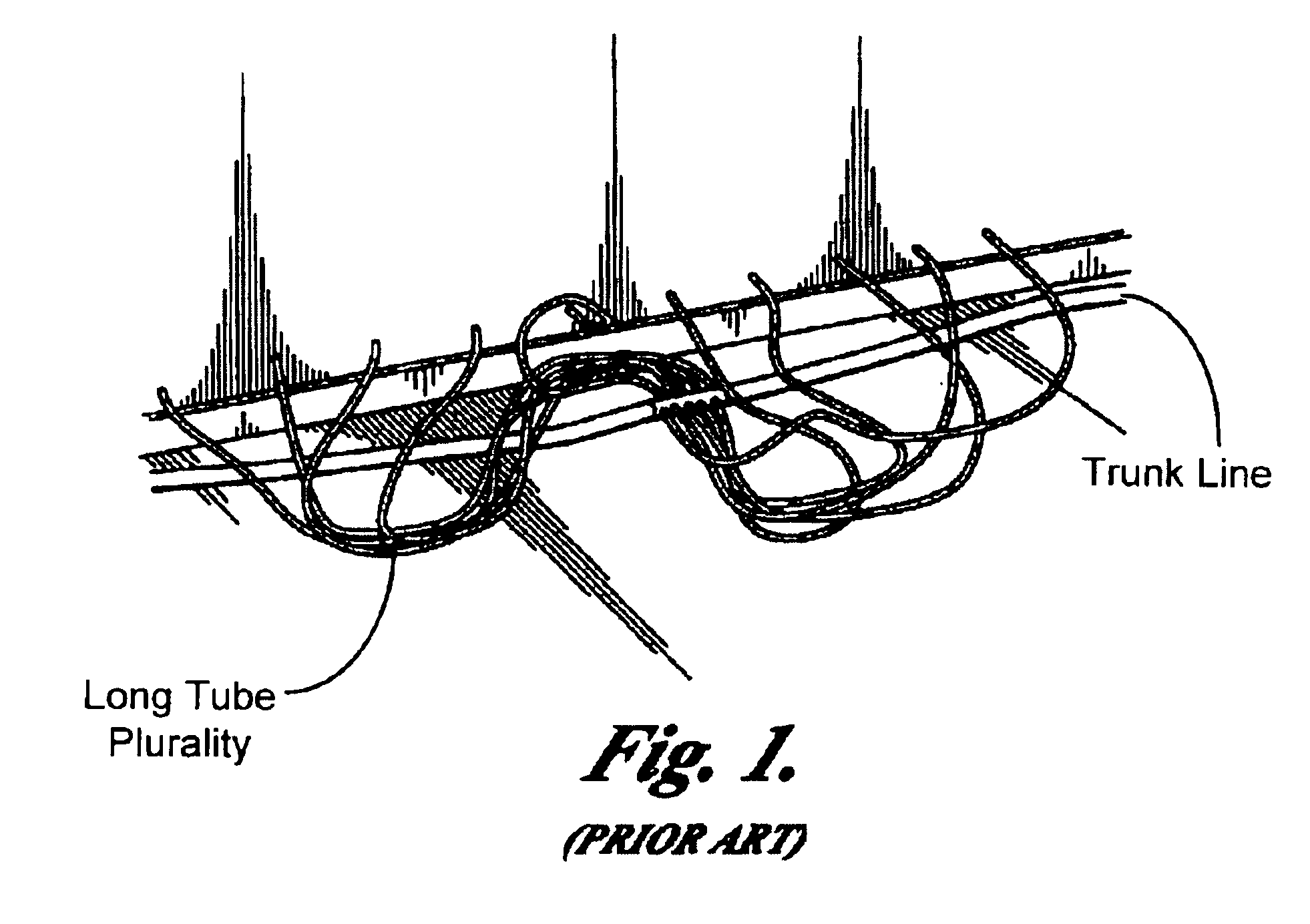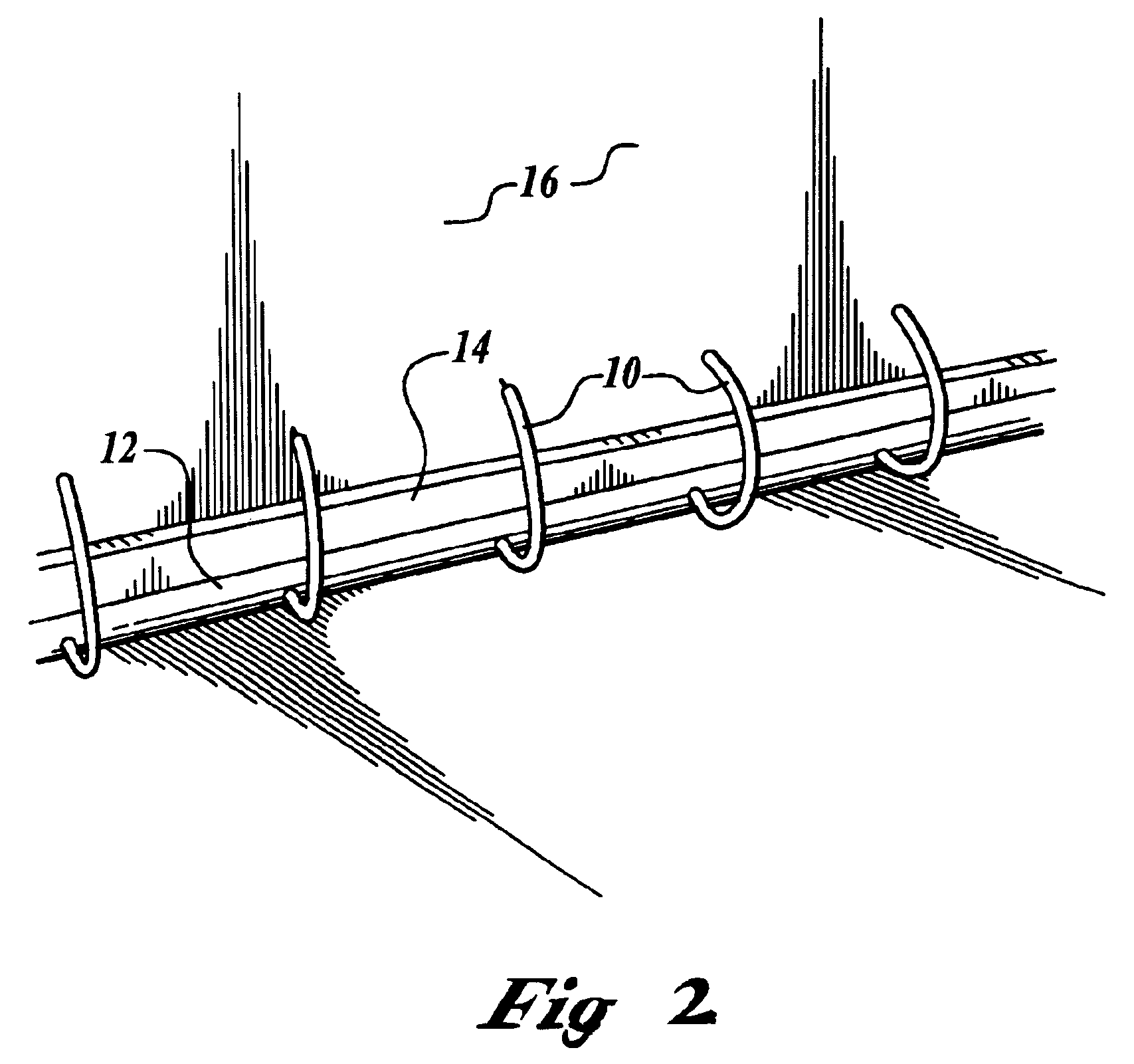Moisture removal system
- Summary
- Abstract
- Description
- Claims
- Application Information
AI Technical Summary
Benefits of technology
Problems solved by technology
Method used
Image
Examples
Embodiment Construction
[0032]FIG. 1 is not an aspect of the present invention, but is useful in illustrating the configuration of my prior invention as set forth in U.S. patent application Ser. No. 08 / 890,141. It is also useful in understanding certain aspects and advantages of the active hoseline feature of present invention.
[0033]FIG. 2 does not show the details of the active hoseline feature of the present invention, but does illustrate the general configuration and context for the subsequent figures and description of the invention. It will be appreciated that while the tubes 10 of FIG. 2 are of uniform and short relatively short length, and uniform frequency along hose 12 for drying wall 16 just above baseboard 14, tubes 10 can be of any length, or of any frequency of distribution, regular or irregular, along hose 12. For example, in some applications it may be desirable for alternate tubes 10 to be long enough to reach a ceiling above the wall 16. In many applications, the preferred frequency of tub...
PUM
 Login to View More
Login to View More Abstract
Description
Claims
Application Information
 Login to View More
Login to View More - R&D
- Intellectual Property
- Life Sciences
- Materials
- Tech Scout
- Unparalleled Data Quality
- Higher Quality Content
- 60% Fewer Hallucinations
Browse by: Latest US Patents, China's latest patents, Technical Efficacy Thesaurus, Application Domain, Technology Topic, Popular Technical Reports.
© 2025 PatSnap. All rights reserved.Legal|Privacy policy|Modern Slavery Act Transparency Statement|Sitemap|About US| Contact US: help@patsnap.com



